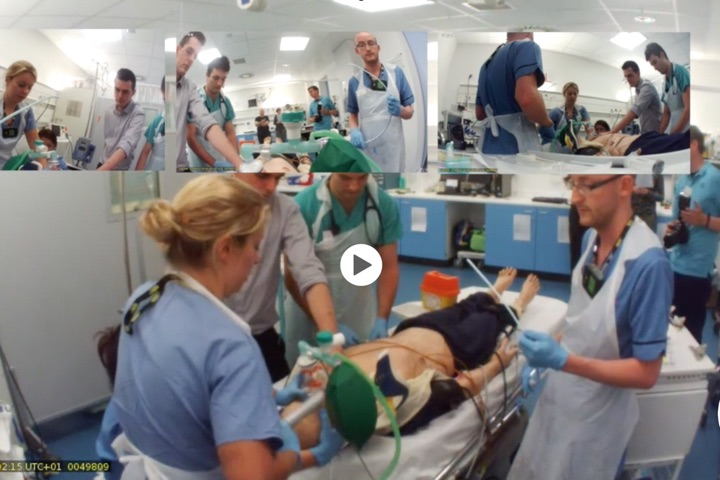Study: A psychologically calibrated brief intervention to enable bystander Cardiopulmonary Resuscitation (CPR)
Background:
Out-of-hospital cardiac arrest (OHCA) is when the heart suddenly stops beating. The victim loses consciousness and will die within a few minutes unless action is taken by those nearby (bystanders). Many research studies show that if bystanders quickly phone for emergency help and carry out chest compressions (CPR) this leads to improved survival.
Current methods of training the public in CPR are generally long, information heavy and delivered by perceived experts. This reduces the likelihood that people will share their CPR knowledge with each other. In addition to this, those most at risk of cardiac events (people from areas of multiple deprivation, ethnic minorities, the elderly) are also the groups that are hardest to reach with CPR knowledge. To address these issues, we have proposed an ultra-brief, shareable CPR awareness video that would increase accessibility to at-risk groups. Additionally, this ultra-brief awareness video will make use of social priming language in order to frame CPR as a social norm in Scotland (e.g. “in Scotland we look out for each other”).
Methods:
We will test the effectiveness of this intervention using a randomised control trial (RCT). Participants will be randomly assigned to one of two conditions: watching the ultra-brief intervention video, or watching a traditional long-form training video (20 mins long). Both groups will then take part in a CPR simulation where they will perform 999 call handler-led CPR for 2 mins on a QCPR manikin that measures CPR quality. The simulation will be filmed from all angles to allow for further analysis of CPR quality.
Hypothesis:
We hypothesise that it will be possible to develop an ultra-brief, shareable, video-based CPR familiarisation intervention to teach compression-only CPR to adults, which increases confidence and lowers the threshold to bystander action. When tested on CPR-naive participants in an OHCA simulation this video will lead to equivalently effective telephone-guided chest compressions when compared to the CPR performance of participants who watched the traditional, long-form CPR familiarisation video.
Aims:
– To determine what is the minimal viable CPR familiarisation a person needs in order to be able to perform good quality CPR as measured by a QCPR manikin.
– To create a short, shareable CPR intervention that precipitates CPR quality equivalent to a traditional, long-form video.
– To increase accessibility to CPR awareness with at-risk groups.
– To frame CPR as a social norm in Scotland.
This project is funded by the Resuscitation Council UK.




